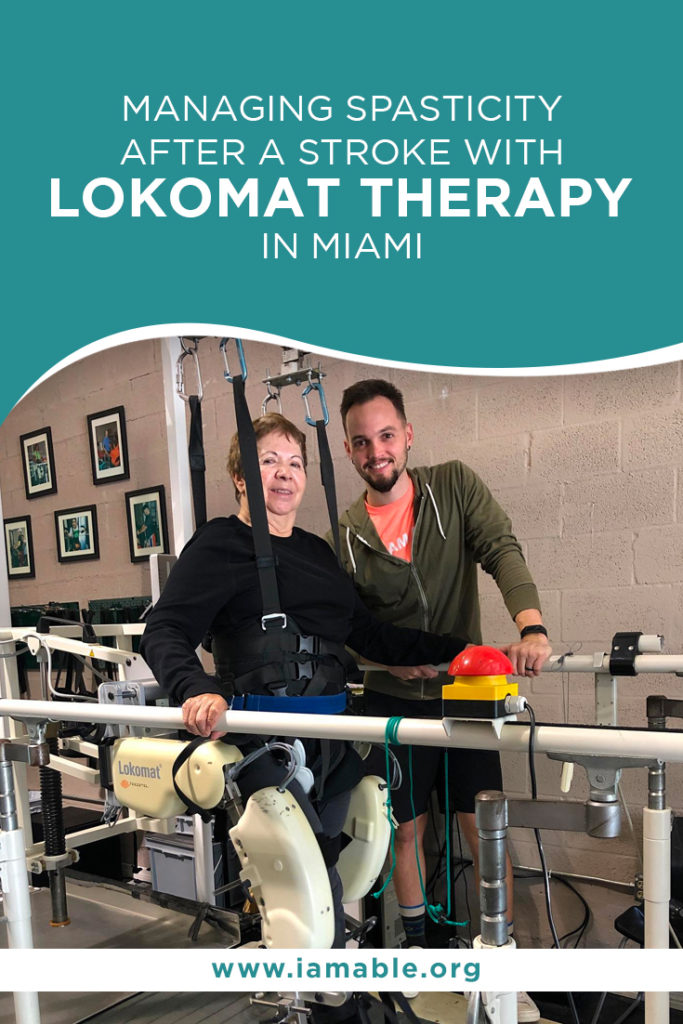Miami, FL 33186

Spasticity is a common problem that affects about 12 million people around the globe. It’s also one of the usual symptoms that 30 percent of stroke survivors experience during their recovery. Unfortunately, this leads to unnecessary spasms and an abnormal increase in muscle tone. It can also slow down paralysis recovery and ruin a patient’s chances of addressing mobility loss. Thankfully, Lokomat Therapy in Miami provides a lifeline for stroke survivors. It’s a widely popular therapy used by thousands of patients hoping to walk again, ease muscle pain, and prevent muscle wasting.
If you’re unfamiliar with Lokomat therapy and its applications for stroke recovery, our guide below might come in handy. In our discussion, we hope to deep dive into muscle spasticity and the key mechanisms of the Lokomat robot-assisted device.
The muscle fibers relax and contract with the help of the nerve roots innervating them. Consequently, the nerves attached to your muscle fibers receive instructions from the body’s main control center – the brain. Each time the motor sensors on your nerve roots get activated, the brain sends signals that instruct the muscle fibers to contract. Conversely, the brain also teaches the muscles to relax after completing the activity.
If you’re a healthy individual, your body’s natural ability to relax and contract muscles will work smoothly. However, if you suffer from a stroke, your brain and muscle connection can get severed. This could lead to the overstimulation of your muscle fibers and the onset of muscle spasticity.
Unfortunately, when this happens, your muscles become stiff and sore. You might also lose the ability to do simple movements like lifting your arms, bending your knees, and walking upright.
The severity of muscle spasticity varies from one stroke survivor to another. Sometimes, it can last for a few weeks if the damage to your brain and the rest of the nervous system heals quickly and if you have access to therapeutic interventions. It’s a good idea to seek help from your primary doctor and therapist as soon as possible, so you can prevent spasticity from causing severe problems to your body.
Here are some of the usual techniques patients use to overcome spasticity and take the next steps towards facilitating stroke recovery:
Muscle spasticity worsens when you stay in place for a long time. Inactivity can also lead to poor posture and increased pain and muscle stiffness. To prevent these problems, you should switch from one position to another when lying down or sitting in your wheelchair. It would also help to invest in good quality pillows, beds, and mobility assistive devices to ensure that your back gets ample support when you sit or sleep.
Life has to go on after a stroke, and most of the time, it requires making minor adjustments to your home so you can move around when you use mobility assistive devices. Here are some things you should consider including in your home revamp project:
There are various therapies designed to help stroke survivors. A few examples include physical therapy, occupational therapy, and Lokomat therapy. Each option offers multiple benefits to patients, so sometimes, patients include one or more of these different therapies into their patient care plan.
For example, occupational therapy helps retrain lost skills and boost brain plasticity. On the one hand, Lokomat therapy in Miami improves gait training and prevents muscle mass loss.
We strongly recommend consulting with your primary doctor to determine how you can personalize your stroke rehabilitation program and what therapies you should undergo.
The success of your gait rehabilitation relies on your physical activity. However, it can be virtually impossible to improve exercise, let alone engage in any physical activity when you have paralysis after a stroke. Thankfully, interventions like the Lokomat therapy in Miami can help you maintain physical activity.
This form of therapy consists of three main components, a treadmill, an assistive arm that supports the upper body, and robot-assisted legs. Essentially, the assistive arm suspends your body, while the robot-assisted legs help you walk on the treadmill. Case studies such as the American Health Association’s pilot research note several benefits of the Lokomat therapy to paralyzed patients. A few examples of these include:
If you are interested in trying Lokomat Therapy in Miami, we suggest getting in touch with our team at iAM ABLE. With our help, you can jumpstart your paralysis recovery journey with carefully designed programs and scientifically proven techniques like Lokomat therapy.
We also offer FREE learning resources that might come in handy in transitioning to your new life. Feel free to download your copy or get in touch directly with our team for help.
Grab our free e-book 7 Unbelievably Important Steps to Take to THRIVE after Paralysis by clicking the image below.
